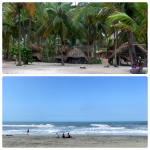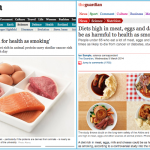Today I want to share a little of my own journey when it comes to diet and nutrition. The diet world is a crazy place and I’ve made plenty of mistakes along the way. I’ve learnt a lot from them and it is my hope that there are a few insights for you too. Here the main stages I remember going through…
1. The generally healthy, ‘eat everything kid’
As a youngster, I pretty much ate everything. Of course, I had the odd stage of fussy eating like every child, but I didn’t have any issues around food. Sweets weren’t forbidden, we just never had much in the way of junk food at home. “What’s for pudding?” was always answered with, “fruit or yoghurt”, and things like Pop Tarts were only for Christmas Day when we got to have whatever we wanted for breakfast.
2. School freedom: chips and sweets
When I got to secondary school – with lunch money as opposed to a dinner ticket – I had the freedom to buy whatever I wanted. The canteen had pies and sausages and chips and I got in the habit of eating those pretty frequently. There was a baker van and an ice-cream van outside school and occasionally my friends and I would visit the chip shop for lunch.
I was really active – always playing football – and food was still good at home so while I wasn’t super lean, I wasn’t exactly overweight either.
3. Eating for football and becoming health conscious
Football was my life in those days and, to maximise my performance, I wanted to follow a healthy diet. In my mid-teens, I followed into the conventional high-carb, low-fat diet and without being zealous about it, I began to choose low-fat options. Pasta was the superfood of the time and I recall eating it plain on a few occasions.
I was training a lot and eating at irregular times around training sessions. I learned to eat even when I wasn’t hungry – so that I’d have enough energy for football later on and without playing on a full stomach.
I was frustrated by frequent muscle cramps during football and was getting fussier about my diet and my preparation for games. This trend continued as I started playing semi-pro. I tried to be as ‘professional’ as I could and even recall refusing to eat a chip-supper my stepdad had bought me for tea one night – because it was a Thursday and would be poor preparation for Saturday’s game.
Although I was fit and performing ok, cramp still dogged me and hindered my game. This fuelled my search for a better diet, better fitness, better performances.
4. The Metabolic Typing Diet
In my early-mid twenties, my high-carb, low fat-diet stopped working. I’d eat porridge for breakfast then about 4 or 5 pieces of fruit a couple of hours later. I’d still be ravenous when I got home for lunch, so I’d devour whatever big dish of pasta my mum had left in the fridge. Bloated, I’d skip my gym session.
At this point, I fell for the pseudoscientific Metabolic Typing Diet. Metabolic Typing claims to detail “exactly which foods and food combinations are right for you” – based on your unique metabolism. Initially it worked. I felt great and – as we always do – I thought this diet was the solution to everything.
Looking back, being categorised a ‘protein-type’, it was more likely that the increased protein and fat in my diet kept me fuller and feeling better than any sort of diet magic. My diet had been pretty carb dominant before then.
5. Binging, gut issues and lethargy – holistic health
Even with my super-duper Metabolic Typing Diet, I was still frequently feeling bloated. I was lethargic at times and more prone to the occasional binge-eating episode. I couldn’t see it then, but when you have a list of foods to avoid, like you do with Metabolic Typing, or when you’re a health freak like I was, you pretty much set yourself up for a binge.
I was listening and reading to more ‘holistic’ health information and ironically becoming less and less healthy all the time. I can see now that holistic health often encourages us to see ourselves as broken and has us fearing everything. I started avoiding all the ‘toxins’ that were making me fat and damaging my health. I began eating even ‘cleaner’ …and binging even more.
Although I never had a diagnosis, I believed my gut-issues were genuine – and possibly a consequence of the repeated courses of antibiotics I’d had most years until my tonsils were removed at age 21. I’d also been experiencing an itchy rash on my skin when I sweated. The doctor’s solution was for me to take a daily antihistamine for the rest of my life. I found this outrageous and it only strengthened my passion for ‘the holistic way’.
In 2010, I splashed out a couple of hundred pounds on a York Labs food intolerance test, which meant more food restriction with little real success. Later that year I embraced the Paleo Diet having been experimenting with it since 2009.
![My Nutrition Rabbit Hole (and why I quit Paleo) [Part 1]](http://www.mikemacdonald.co.uk/wp-content/uploads/2014/06/DSC00968-1024x768.jpg)
Age 25. The start of my PT course. Fairly lean but not satisfied. 6 weeks of paleo-esque, clean eating culminated in an epic binge.
6. The Paleo Diet
Once again, I’d found my answer. A simple approach with a focus on ‘real’ food, paleo seemed to be science-based and was a good fit for my holistic, puritanical ideals. It also fit well with the slight anti-carb bias I’d developed since experimenting with Metabolic Typing, and which was reinforced in reading the work of Gary Taubes.
I felt great. No more bloating. No more rash. No more grains, beans, pulses, dairy products or modern, industrial foods of any sort. I was a warrior. A health-warrior. I was on a higher, more ethical path and the books I read and podcasts I listened to reaffirmed my paleo-ness. Although I was now a personal trainer, I’d never quite achieved the body I’d wanted and was convinced I was on track now! (I’d retired from football so sporting performance was no longer a priority). Food quality was everything. Calories didn’t count to me and I hated the concept of tracking them.
I did a super-strict, 30-day paleo challenge more than once without seeing it as being disordered. (No grains, legumes, dairy, added sugar, alcohol, white potatoes, baked goods/desserts, etc is unnecessary and pretty extreme!). The more foods I restricted, the more I binged. When I binged, I felt horrendous – both physically and psychologically. It was a moral failure. I don’t know how many times I vowed to do it better. Cleaner. More committed. The list of trigger foods was growing all the time. I believed I was a sugar addict and had to eliminate it sugar completely – just like an alcoholic would do with booze.
The binges ensured I never got as lean as I wanted. The desire to get leaner and healthier combined with the beliefs I had about food encouraged ever-greater food restriction. This, in turn, led to more binging and the cycle went on and on… Naturally, I also experimented with intermittent fasting in those paleo days and even tried juicing for a week or two.
Eventually I edged closer to a turning point. Click here to read part 2: where I’m at now and the 6 big lessons from my story.

![My Nutrition Rabbit Hole (and why I quit Paleo) [Part 1]](http://www.mikemacdonald.co.uk/wp-content/uploads/2014/06/photo-4-e1402477749247.jpg)
![My Nutrition Rabbit Hole (and why I quit Paleo) [Part 1]](http://www.mikemacdonald.co.uk/wp-content/uploads/2014/06/4906_107297138144_7710336_n.jpg)
![My Nutrition Rabbit Hole (and why I quit Paleo) [Part 2]](https://www.mikemacdonald.co.uk/wp-content/uploads/2014/06/Latin-America-Food-150x150.png)


